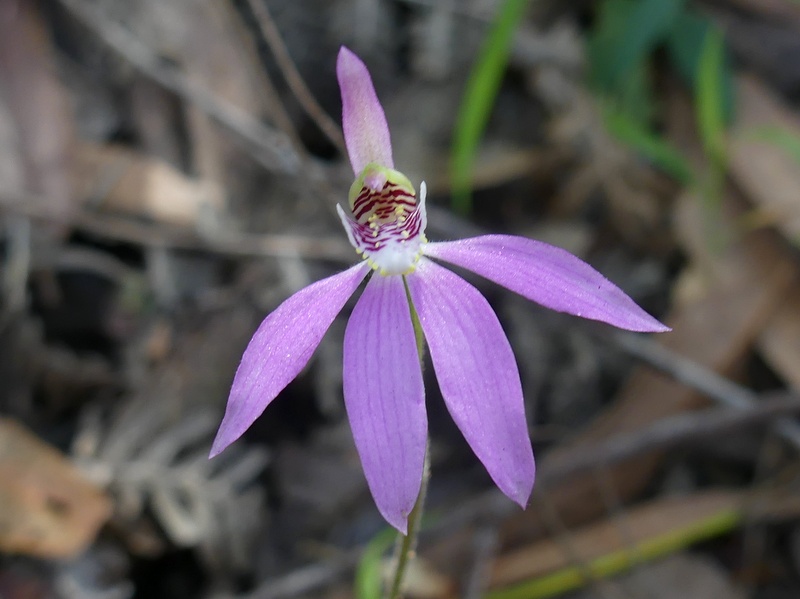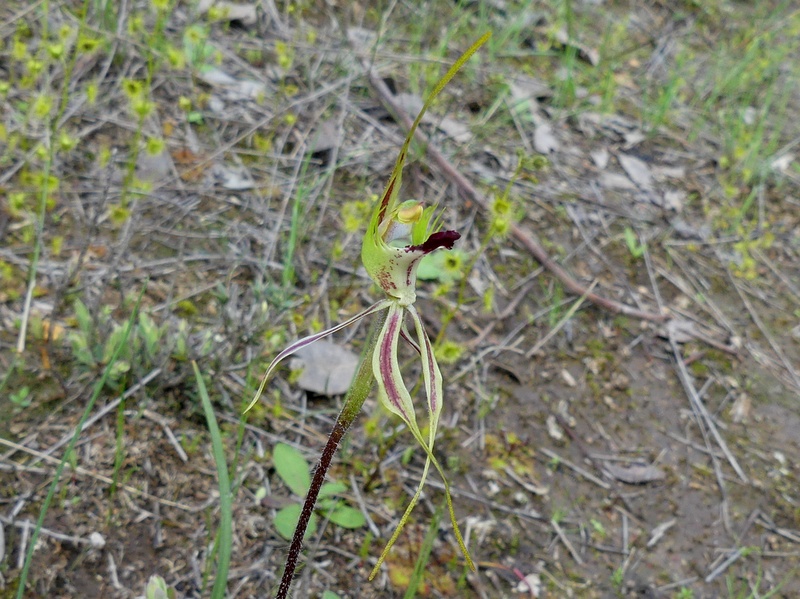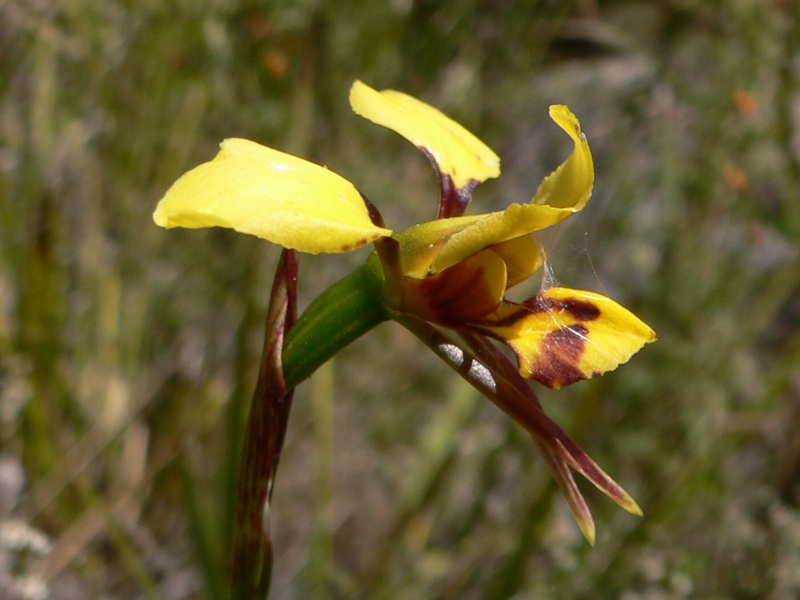
Pink Fingers is probably the most common and familiar of local orchids. Photo: Ian Fraser.
It’s spring, and my fancy turns to orchids; I’m in fact an unashamed orchiholic. That doesn’t make me an expert of course, but I am passionate about them.
I’m not talking about the big flashy hybrid tropical greenhouse blooms (though I’ve been lucky enough to enjoy some of their wild ancestors in Borneo and the Andes), but the abundance of native ground orchids which brighten our nature reserves from mid-September to November. (Orchids flower at other times of the year too, but this is peak time.)
There are about 1700 orchid species in Australia alone and at a world level one in every eight flowering plant species is an orchid. They are found from the sub-arctic zones to the tropics where they are most profuse.
Overall, the epiphytes – the ones we see in greenhouses, and which in the wild grow on treetrunks – dominate. But in Australia, where tropical rainforests aren’t extensive, the ground orchids rule, in forests, woodlands and grasslands.
The ACT is an orchid-lover’s paradise. More than 50 species have been recorded on Black Mountain alone, about the same as can be found in the whole of Great Britain and Ireland.
Among the first to appear in spring here are the little finger orchids, a blue species, a couple of pink ones and several white ones. Different species appear as the season progresses and it is a delight to go out regularly to see what’s opened since our last visit. It’s a veritable pageant.

Thin-clubbed Spider Orchid. The rough tips to the long drooping ‘petals’ emit the chemical which attracts the male wasps. Photo: Ian Fraser.
Fascinatingly, few orchids actually offer a nectar treat to pollinators, which is how most flowering plants attract the insects to collect and deliver the pollen.
To put it bluntly, orchids cheat. The finger orchids simply offer bright-coloured flowers which the little flies and wasps associate with nectar. By the time they’ve investigated and realise there’s nothing there for them, it’s too late and they’ve come in contact with the pollen.
The showy spider orchids have long wispy petals (I’m going to use the term ‘petal’ loosely here, rather try to explain the details of orchid flower structure). Some of these have knobbly tips which emit a scent that mimics, with a remarkable degree of accuracy, the perfume of a tiny female wasp.
Each orchid species focuses on a different wasp. The male races from upwind to the flower which has a special petal, like a tongue, with warts or hairs which apparently also resemble the female wasp. In his frustrating struggle, he encounters the pollen. There is a common spider orchid on Black Mountain, and in other parts of Canberra Nature Park, which flowers in October.

The Long-clubbed Bird Orchid; its tongue looks remarkably insect-like. Photo: Ian Fraser.
The real experts in fooling male wasps however are the bird orchids, strange little squat green and purple flowers which grow in colonies on damp grassy banks and in shady wet gullies.
The “tongue” of the bird orchid looks remarkably like an insect, even to our eyes, and it nods in the breeze. It also emits an alluring scent which even the male wasp can’t distinguish from the real thing. He attempts to mate with the nodding tongue and in the struggle gets tossed back to where a bundle of sticky pollen is waiting.
A much more striking and colourful group of common orchids on the Canberra hills are the donkey orchids or double-tails. All the common local ones are cheerfully bright yellow, sometimes with dark blotches.

The Tiger Orchid is probably the most common local donkey orchid.Photo: Ian Fraser.
The Tiger Orchid shows the origin of the double-tails name and, with a bit more imagination, of the donkey with ears and whiskers. I well remember my parents showing me the donkeys on a picnic in the Adelaide Hills. I was enthralled then, and I still am.
Mount Ainslie/Majura, Gungahlin Hill, Mount Taylor and Mount Wanniassa are other good places to look for orchids in Canberra.
Ian Fraser is a Canberra naturalist, conservationist and author. He has written on all aspects of natural history, advised the ACT Government on biodiversity and published multiple guides to the region’s flora and fauna.
Original Article published by Ian Fraser on Riotact.









